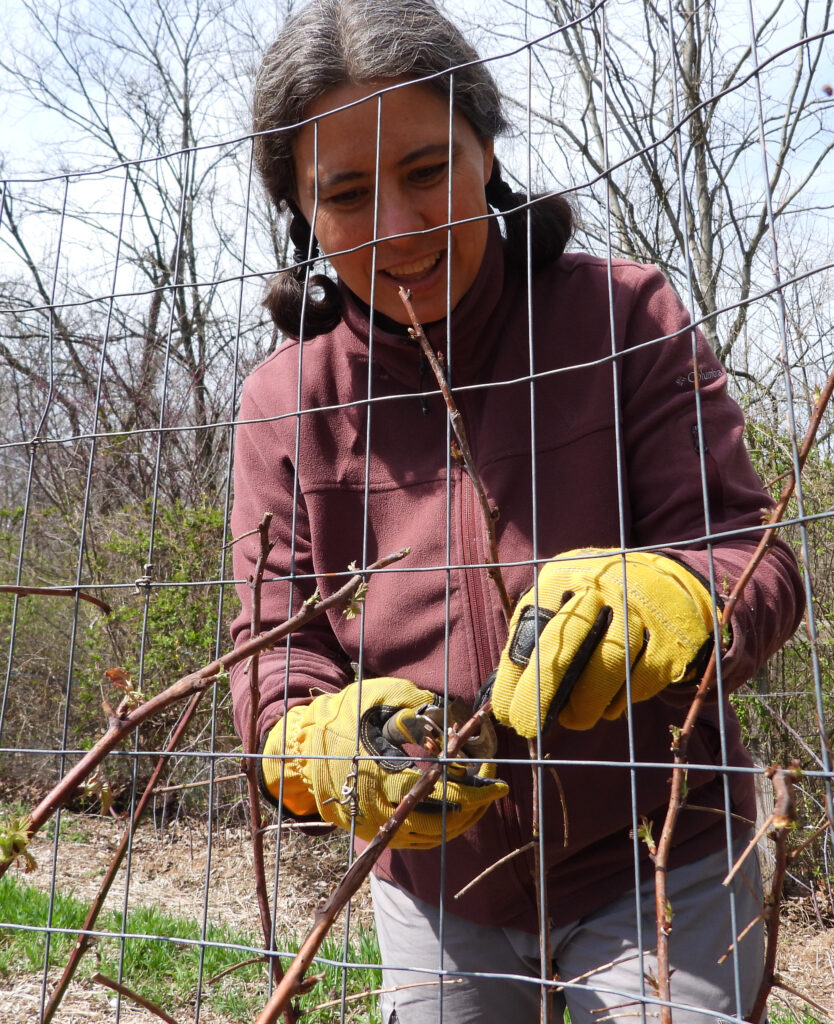
I’ve pruned our black raspberries, everbearing red raspberries, and blackberries in spring, summer, and winter and the plants really don’t seem to care what the calendar said. So nowadays I prune at a time that works for me.
In my opinion, the toughest part of pruning brambles that have primocanes and floricanes is figuring out which canes have gone through their two-year cycle and are dead. Second toughest is figuring out where the dead tops of everbearing raspberries start.
The solution to both of these puzzles is to wait and prune once the leaf buds have started expanding. At that point, it’s obvious at a glance which canes (or parts of canes) are alive or dead.
The bonus of pruning at this time of year is that it gives you an excuse to be out in the garden on stunning days without encouraging you to plant annual crops too early. (This is a case of do as I say, not as I do — we already have lettuce and peas and parsley and broccoli in the ground. Most of it is sitting there giving me the stinkeye for planting too soon!)
 On an unrelated note, Mark and I just added half an hour of cover-crop content to our Soil-First Gardening course. If you already own a copy, you can simply log in and enjoy the new videos. If you haven’t grabbed your copy yet, now’s a great time since you can use this coupon link to get 67% off through April 1. Enjoy!
On an unrelated note, Mark and I just added half an hour of cover-crop content to our Soil-First Gardening course. If you already own a copy, you can simply log in and enjoy the new videos. If you haven’t grabbed your copy yet, now’s a great time since you can use this coupon link to get 67% off through April 1. Enjoy!
Hi Mark & Anna!..I just happened to bump into your site again having lost track of you after your move a couple years ago…Glad to see you’re still at it.
I was always confused about the primo-cane, flora-cane thing too, so I decided to just paraphrase the Marines’ attitude–“Kill ’em all and let God sort them out.”…I trim all of last year’s growth at about 9” in March (zone 4) and forget it. Both types produce in abundance. Last yr’s floricanes are often obviously dead & dessicated and snap right off at the base with some hand encouragement.
I’m glad you’re back! And that’s a great way to simplify pruning!
An even simpler method with everbearing raspberries (but not other kinds of brambles — you’ll get no fruits from those if treated this way!) is to cut everything down to the ground in the winter. The upside is extreme ease and an extra large fall crop. The downside, of course, is no spring crop.